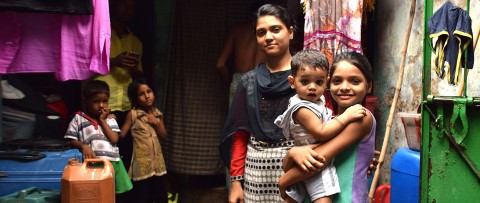
Childhood poverty influences life choices, opportunities and continues a cycle that lasts for generations. Understanding the global landscape of poverty helps us build impactful programs and create change in the communities we serve.
How does health impact poverty? Does inadequate education cause poverty or does poverty create a lack of education? And can poor health impact the learning process, too? Everything is intertwined, and where problems begin can be hard to understand. What isn’t hard to see is the need for support in the areas of health care, education, life skills and more, and that’s where our programs begin to fill the gaps.


Children living in poverty often have greater health problems and are more likely to suffer from disease because of a lack of proper treatment. Poor health can keep children from school for weeks or even years at a time, holding them further back in a system that was already inadequate. Our programs provide children with access to health and dental care, as well as psychological wellness courses and activities, so they have a chance to focus on education, helping their families, or just being a kid.

The problem of education and poverty isn’t simply a matter of inadequate educational systems. The lack of resources and support in these communities means children fail to attend school, then fall behind and eventually drop out. Education is essential for children to acquire the tools they need to create lasting change in their lives and break the cycle of poverty for themselves and their families.

How can you apply for a job if you’ve never seen a resume? Or haven’t been taught how to speak to employers, or where to look for work? Youth in impoverished communities find themselves without the basic life skills to get a job. Our programs provide youth the skills they need to seek and secure stable employment in their local communities and put them on track to a better future.

Many children in poverty have never seen a life outside the lack and struggle of their current circumstances. One of the most important gifts we can give a child in poverty is the vision for a better future. Our empowerment programs foster social responsibility, instill leadership skills, and offer employment training to help children develop the hope and confidence to free themselves and their families from poverty.

The problem of global poverty can feel so overwhelming that you may wonder where to start and if your donation could even make a difference? The answer is: yes, your support is a huge help. Working together, we can create lasting change for the children in our programs worldwide. How do we know? We’ve seen the results. Learn more about how your donation or sponsorship can make an impact.

We live in a technologically enabled society, and access to technology is a crucial part of moving communities forward. Certain regions of the world have access to mobile phones and computers, while others are almost completely left out, leaving them behind and stuck in poverty. Learn more about the implications of disconnection and how you can help.
Hunger isn’t simply a matter of an absence of food. It can mean a lack of the right food, too. Some areas of the world suffer from scarcity while others have food without the right vitamins, minerals or nutrition, leading to an epidemic of obesity. Understand more about the problem of food disparity and how you can help.

Poverty isn’t only a developing world problem. Child poverty is seen everywhere, even in developed countries like the United States. It’s in every size of city and small town across the country. Read more about poverty in the U.S. and the far‑reaching consequences it has on children living in these communities.

Africa, where half of the population are children, is home to some of the world’s poorest people and least prosperous countries. Harsh conditions make it hard for its people to break the cycle of poverty and envision a better future for their children. Read more about what we can do to create change in Africa.
